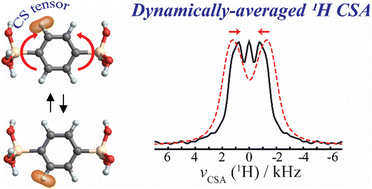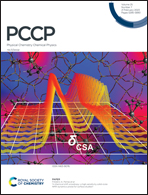1H chemical shift anisotropy: a high sensitivity solid-state NMR dynamics probe for surface studies?
Abstract
Dynamics play significant roles in chemistry and biochemistry—molecular motions impact both large- and small-scale chemical reactions in addition to biochemical processes. In many systems, including heterogeneous catalysts, the characterization of dynamics remains a challenge. The most common approaches involve the solid-state NMR measurement of anisotropic interactions, in particular 2H quadrupolar coupling and 1H–X dipolar coupling, which generally require isotope enrichment. Due to the high sensitivity of 1H NMR, 1H chemical shift anisotropy (CSA) is a particularly enticing, and underexplored, dynamics probe. We carried out 1H CSA and 1H–13C dipolar coupling measurements in a series of model supported complexes to understand how 1H CSA can be leveraged to gain dynamic information for heterogeneous catalysts. Mathematical descriptions are given for the dynamic averaging of the CSA tensor, and its dependence on orientation and asymmetry. The variability of the orientation of the tensor in the molecular frame, in addition to its magnitude and asymmetry, negatively impacts attempts to extract quantitative dynamic information. Nevertheless, 1H CSA measurements can reveal useful qualitative insights into the motions of a particularly dilute site, such as from a surface species.



 Please wait while we load your content...
Please wait while we load your content...